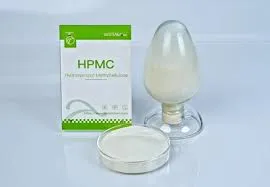
Dec . 03, 2024 22:09 Back to list
Hydroxyethyl Cellulose Applications and Benefits in Paint Formulations for Enhanced Performance
Hydroxyethyl Cellulose for Paint A Comprehensive Overview
Hydroxyethyl cellulose (HEC) is a non-ionic water-soluble polymer derived from cellulose, a natural polysaccharide. With its versatile properties, HEC plays a significant role in various applications, particularly in the paint and coatings industry. This article explores the characteristics, benefits, applications, and recent advancements of hydroxyethyl cellulose in paint formulations.
Characteristics of Hydroxyethyl Cellulose
HEC is produced through the chemical modification of cellulose, wherein ethylene oxide is reacted with cellulose, resulting in a viscous and water-soluble compound. This modification generates a polymer that exhibits unique rheological properties, making it suitable for a wide range of formulations.
One of the key characteristics of HEC is its ability to form stable solutions. The compound imparts viscosity to water-based systems, enabling a desirable flow and leveling of paint products. Additionally, HEC is thermally and chemically stable, which helps maintain consistency in formulations under varying environmental conditions.
Benefits of Using Hydroxyethyl Cellulose
1. Thickening Agent HEC serves as an effective thickener, enhancing the viscosity of paints and coatings. This property facilitates the application of paint by preventing sagging and improving the uniformity of the coating.
2. Water Retention The water retention capabilities of HEC ensure that the paint remains workable for an extended period during application. This is particularly important for large-scale projects where painters need sufficient time to work without compromising the quality of the finish.
3. Film-Forming Ability When dried, HEC contributes to the formation of a flexible and robust film, providing excellent adhesion and durability. This film can effectively resist water, dirt, and chemical damage, extending the lifespan of the painted surface.
4. Compatibility with Other Additives HEC is compatible with various other additives, including colorants, surfactants, and preservatives. This compatibility allows formulators to create customized paint products with improved performance characteristics.
hydroxyethyl cellulose for paint

5. Low VOC Content Hydroxyethyl cellulose is considered a low volatile organic compound (VOC) ingredient, making it an eco-friendly choice for paint formulations. The use of HEC contributes to reducing the overall VOC emissions, aligning with environmental regulations and consumer preferences for sustainable products.
Applications of Hydroxyethyl Cellulose in Paint
HEC is employed in various types of paint formulations, including architectural paints, industrial coatings, and specialty paints. In architectural paints, HEC enhances the application properties, such as the ease of brushing and rolling, while ensuring uniform coverage and finish.
In industrial coatings, HEC is used to formulate anti-corrosive paints, providing the necessary viscosity and film-forming properties required to protect surfaces from harsh environmental conditions. Specialty paints, such as those used in marine applications, benefit from HEC’s water resistance and stability in saline environments.
Furthermore, HEC is also utilized in adhesive and sealant formulations, where its thickening and water retention properties improve the performance and application characteristics of these products.
Recent Advances and Trends
The paint and coatings industry is increasingly looking for innovative solutions to meet consumer demands and regulatory standards. Recent advancements in HEC technology have led to the development of modified grades with enhanced properties. For instance, the introduction of high-performance HEC grades has improved the ease-of-use and performance of water-based paints, including improved open time and reduced microbial growth.
Moreover, researchers are exploring the potential of combining HEC with other biopolymers to develop sustainable and environmentally friendly paints. These advancements align with the industry’s transition toward green chemistry and sustainable practices.
Conclusion
Hydroxyethyl cellulose is a pivotal ingredient in the formulation of modern paints and coatings, offering numerous advantages that enhance performance and application. Its ability to act as a thickening agent, provide water retention, and form a durable film makes it indispensable in the industry. As technological advancements continue, HEC is poised to play an even more significant role in developing innovative and sustainable paint solutions, meeting both consumer needs and environmental mandates.
-
Versatile Hpmc Uses in Different Industries
NewsJun.19,2025
-
Redispersible Powder's Role in Enhancing Durability of Construction Products
NewsJun.19,2025
-
Hydroxyethyl Cellulose Applications Driving Green Industrial Processes
NewsJun.19,2025
-
Exploring Different Redispersible Polymer Powder
NewsJun.19,2025
-
Choosing the Right Mortar Bonding Agent
NewsJun.19,2025
-
Applications and Significance of China Hpmc in Modern Industries
NewsJun.19,2025







